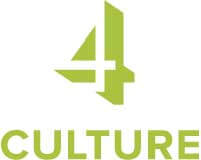Uncategorized
By Date
-
Doors Open Facilities
Deadline: Sep 4, 2024
This grant helps organizations acquire, build, or renovate the bricks and mortar buildings that make cultural experiences possible.
Details › -
Public Free Access
Deadline: Feb 27, 2025
This program helps reduce barriers to your organization's programming.
Details › -
Building for Equity: Facilities
Deadline: Apr 17, 2025
Funds organizations buying, building, or renovating the buildings and specialized spaces that make cultural experiences possible. Project budgets that are 10 million and under are encouraged to apply.
Details › -
Landmarks Capital
Deadline: Jun 25, 2025
Supporting rehabilitation projects and designated landmarks.
Details › -
Equipment for Organizations
Deadline: Jul 9, 2025
Putting essential tools in the hands of King County’s cultural organizations and agencies.
Details › -
Building for Equity: Project Development
Deadline: Aug 7, 2025
Funds and supports applicants building organizational capacity to meet long-term facility needs.
Details › -
Sustained Support Midstream Cycle
Deadline: Sep 10, 2025
Expands 4Culture’s flagship grant program, providing operating and programmatic dollars to meet the day-to-day needs of cultural, science and technology organizations.
Details › -
Curiosity Pass: A Cultural Education Program
Deadline: Oct 21, 2025
Funds cultural partners with youth-serving programs and activities that expand learning opportunities in our K-12 public schools.
Details › -
Storefront Media Gallery: Artist Carousel
Deadline: Oct 23, 2025
The Storefront Media Gallery brings vibrant, dynamic art to an urban audience on the go.
Details › -
Building for Equity: Anchoring Community
Deadline: Nov 6, 2025
Funds and fosters equitable development for organizations buying, building, or renovating buildings and specialized spaces that make cultural experiences possible. Project budgets that are 10 million+ are invited to apply.
Details › -
Cultural Support Services Projects
Deadline: Nov 12, 2025
Through Cultural Support Services Projects we support organizations and Tribes contributing to the quality of life and career development for cultural workers.
Details › -
Building for Equity: Native Cultural Facilities
Deadline: Nov 20, 2025
Supports projects including land acquisition, development, renovations, and new construction that advance the preservation, expression, and vitality of Native cultures.
Details › -
Gallery 4Culture
Deadline: Dec 11, 2025
Gallery 4Culture presents the work of outstanding independent artists living in King County.
Details › -
Network of Support Request for Qualifications
Deadline: Jan 8, 2026
Apply to become a Network of Support coach, mentor, consultant, or technical assistance provider for current and potential 4Culture applicants and awardees.
More Information
cassie.chinn@4culture.org
206-263-8324
Details › -
King County Metro Transit, RapidRide Moving Stories: Short-Form Graphic Novels
Deadline: Jan 13, 2026
King County Metro and 4Culture seek six artists to create short-form graphic novels that illuminate community stories along new and existing RapidRide lines.Metro + 4Culture seek six artists to create short-form graphic novels that illuminate community stories along new and existing RapidRide lines.
Details › -
Crisis and Transformation
Deadline: Late Fall 2025
Assisting current 4Culture Sustained Support awardees through times of emergency and opportunity with consultant services through the Network of Support.
More Information
cassie.chinn@4culture.org
206-263-8324
Details ›
Ongoing
-
Landmark Nomination Support
Deadline: Jun 18 - Dec 1, 2025
Helping individuals or organizations preparing a local landmark nomination of an historic site in King County, Washington.
Details › -
Touring Arts Roster Presenter Incentive Program
Deadline: Ongoing Due 1 month before event
Funding a wide array of projects produced by those who are new to 4Culture.
Details › -
Heritage Professional Development Stipend
Deadline: Jan 1-Oct 31, 2025
Funds to help you participate, make connections, and learn new skills for your career path in the heritage field.
Details › -
Open 4Culture
Deadline: Ongoing
Funding a wide array of projects produced by those who are new to 4Culture.
Details › -
Emergency and Unforeseen
Deadline: Ongoing
Assisting organizations with unforeseen building costs and opportunities.
Details › -
Arc Artist Fellowship
Deadline: On hold until 2026
The Arc Artist Fellowship offers operational support for artists as they pursue their creative work.
Details › -
Touring Arts Roster Auditions
Deadline: Postponed until 2025
Serving as an online marketing tool for performing artists and a booking resource for event presenters.
Details ›
